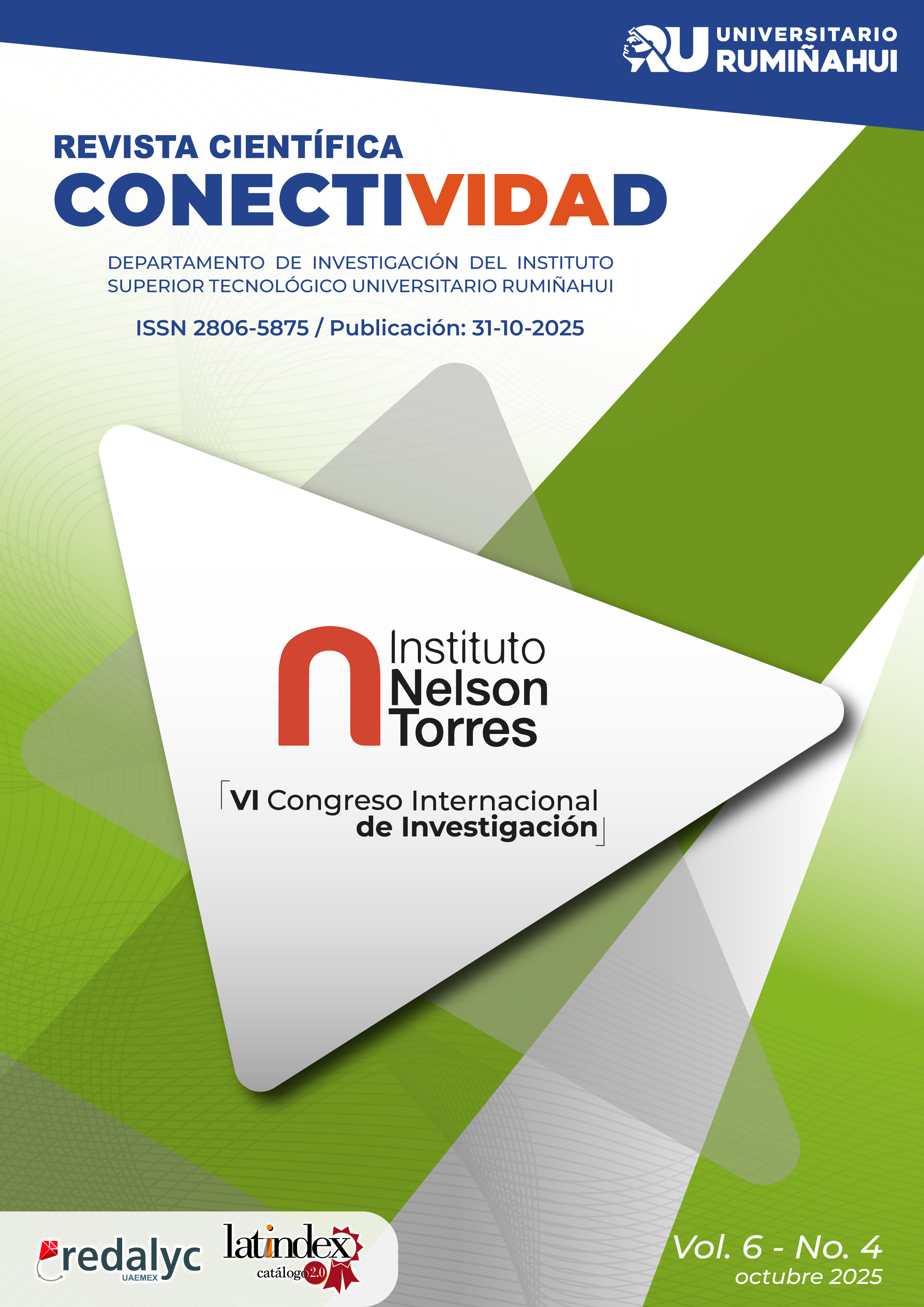Influencer marketing as a strategy to build trust in e-commerce: A study of Mercado Libre in Latin America
DOI:
https://doi.org/10.37431/conectividad.v6i4.347Keywords:
Digital marketing, Latin America, Influencers, E-commerce, TrustAbstract
This article explores the impact of influencer marketing as an effective strategy to build trust in e-commerce across Latin America, focusing on the case of Mercado Libre. Using a qualitative approach based on content analysis and documentary review, it examines the main tactics employed by the e-commerce platform—such as sponsored posts, unboxings, reviews, and promotional launches—and how these contribute to enhancing consumers’ perception of safety, authenticity, and satisfaction.
Influencers, through their loyal follower base and strong rapport with their audience, serve as social validators of the products and services offered by companies like Mercado Libre. This transferred credibility helps overcome barriers such as distrust in online transactions, uncertainty about product quality, and fear of fraud. Additionally, content curation and quality control by the company ensure message consistency and protect brand reputation.
The analysis shows that influencer collaborations generate emotional connections between the consumer and the brand, reinforce customer loyalty, and boost conversion rates. In markets where trust is a key asset for digital commerce development, influencer marketing becomes a crucial tool not only for product positioning but also for building long-term user relationships. The study also highlights the importance of continuously monitoring and adapting campaigns based on audience feedback and evolving digital trends
References
Castelló-Martínez, A., & del Pino-Romero, C. (2019). De la publicidad a la comunicación persuasiva integrada: Estrategia y empatía. ESIC Editorial.
Establés, M. J., Guerrero-Pico, M., & Contreras-Espinosa, R. S. (2019). Jugadores, escritores e influencers en redes sociales: Procesos de profesionalización entre adolescentes. Revista Latina de Comunicación Social, 74, 214-236. https://doi.org/10.4185/RLCS-2019-1328 DOI: https://doi.org/10.4185/RLCS-2019-1328
Martínez-Sala, A. M., Monserrat-Gauchi, J., & Segarra-Saavedra, J. (2018). El influencer 2.0 turístico: De turista anónimo a líder de opinión. Revista Latina de Comunicación Social, 73, 353-367. https://doi.org/10.4185/RLCS-2019-1398 DOI: https://doi.org/10.4185/RLCS-2019-1388
Pérez-Curiel, C., & Sanz-Marcos, P. (2019). Estrategia de marca, influencers y nuevos públicos en la comunicación de moda y lujo: Tendencia Gucci en Instagram. Prisma Social, 24, 1-24.
Saavedra, A., & Gómez, F. (2020). Confianza y comportamiento del consumidor en el e-commerce latinoamericano. UNAM.
Segarra-Saavedra, J., & Hidalgo-Marí, T. (2018). Influencers, moda femenina e Instagram: El poder de prescripción en la era 2.0. Revista Mediterránea de Comunicación, 9(1), 313-325. https://doi.org/10.14198/MEDCOM2018.9.1.17. DOI: https://doi.org/10.14198/MEDCOM2018.9.1.17
Correa, J. C., Laverde Rojas, H., Martínez, C. A., Camargo, O. J., Rojas Matute, G., & Sandoval Escobar, M. (2019). The consistency of trust sales relationship in Latin American e commerce. arXiv.
Filieri, R. (2015). What makes online review helpful? The role of review visibility, reviewer credibility and review content. Journal of Business Research, 68(4), 1 9.
Influencity. (2023). The largest influencer study in Latin America in 2023.
Latam Intersect PR. (2025, January 8). Decline in trust: Latin America’s shift from influencer endorsements to genuine user reviews.
Latin American Post. (2025). Latin America to embrace social media shifts driving consumption in 2025.
McKnight, D., Choudhury, V., & Kacmar, C. (2002). Developing and validating trust measures for ecommerce: An integrative typology. Information Systems Research, 13(3), 334 359. DOI: https://doi.org/10.1287/isre.13.3.334.81
Pavlou, P., & Gefen, D. (2004). Building effective online marketplaces with institution based trust. Information Systems Research, 15(1), 37 59. DOI: https://doi.org/10.1287/isre.1040.0015
Peña García, N., Losada Otálora, M., Pérez Auza, D., & Cruz, M. P. (2024). Reviews, trust and customer experience in online marketplaces: The case of Mercado Libre Colombia. Frontiers in Communication. DOI: https://doi.org/10.3389/fcomm.2024.1460321
Thaw, Y. Y., Mahmood, A. K., & Durai Dominic, P. (2009). A study on the factors that influence the consumers trust on ecommerce adoption. arXiv.
Braun, V., & Clarke, V. (2006). Using thematic analysis in psychology. Qualitative Research in Psychology, 3(2), 77–101. DOI: https://doi.org/10.1191/1478088706qp063oa
Grimmer, J., & Stewart, B. M. (2013). Text as data: The promise and pitfalls of automatic content analysis methods for political texts. Political Analysis, 21(3), 267–297. DOI: https://doi.org/10.1093/pan/mps028
Johansson, M., Nilsson, M., & Luoma, T. (2020). A qualitative content analysis of social media influencers’ credibility. Umeå University.
Lincoln, Y., & Guba, E. (1985). Naturalistic Inquiry. Sage. DOI: https://doi.org/10.1016/0147-1767(85)90062-8
Lombard, M., Snyder‑Duch, J., & Bracken, C. C. (2002). Content analysis in mass communication: Assessment and reporting of intercoder reliability. Human Communication Research, 28(4), 587–604. DOI: https://doi.org/10.1111/j.1468-2958.2002.tb00826.x
Malhotra, N. K., & Birks, D. F. (2007). Marketing Research: An Applied Approach (3rd ed.). Pearson. DOI: https://doi.org/10.1108/S1548-6435(2007)3
Saunders, M., Lewis, P., & Thornhill, A. (2016). Research Methods for Business Students (7th ed.). Pearson.
Yin, R. K. (2014). Case Study Research: Design and Methods (5th ed.). Sage
Published
How to Cite
Issue
Section
Categories
License
Copyright (c) 2025 Instituto Superior Tecnológico Universitario Rumiñahui

This work is licensed under a Creative Commons Attribution-NonCommercial 4.0 International License.
The originals published in the electronic edition under the first publication rights of the journal belong to the Instituto Superior Tecnológico Universitario Rumiñahui; therefore, it is necessary to cite the source in any partial or total reproduction. All the contents of the electronic journal are distributed under a Creative Commons Attribution-Noncommercial 4.0 International (CC-BY-NC 4.0) license.







2.png)





